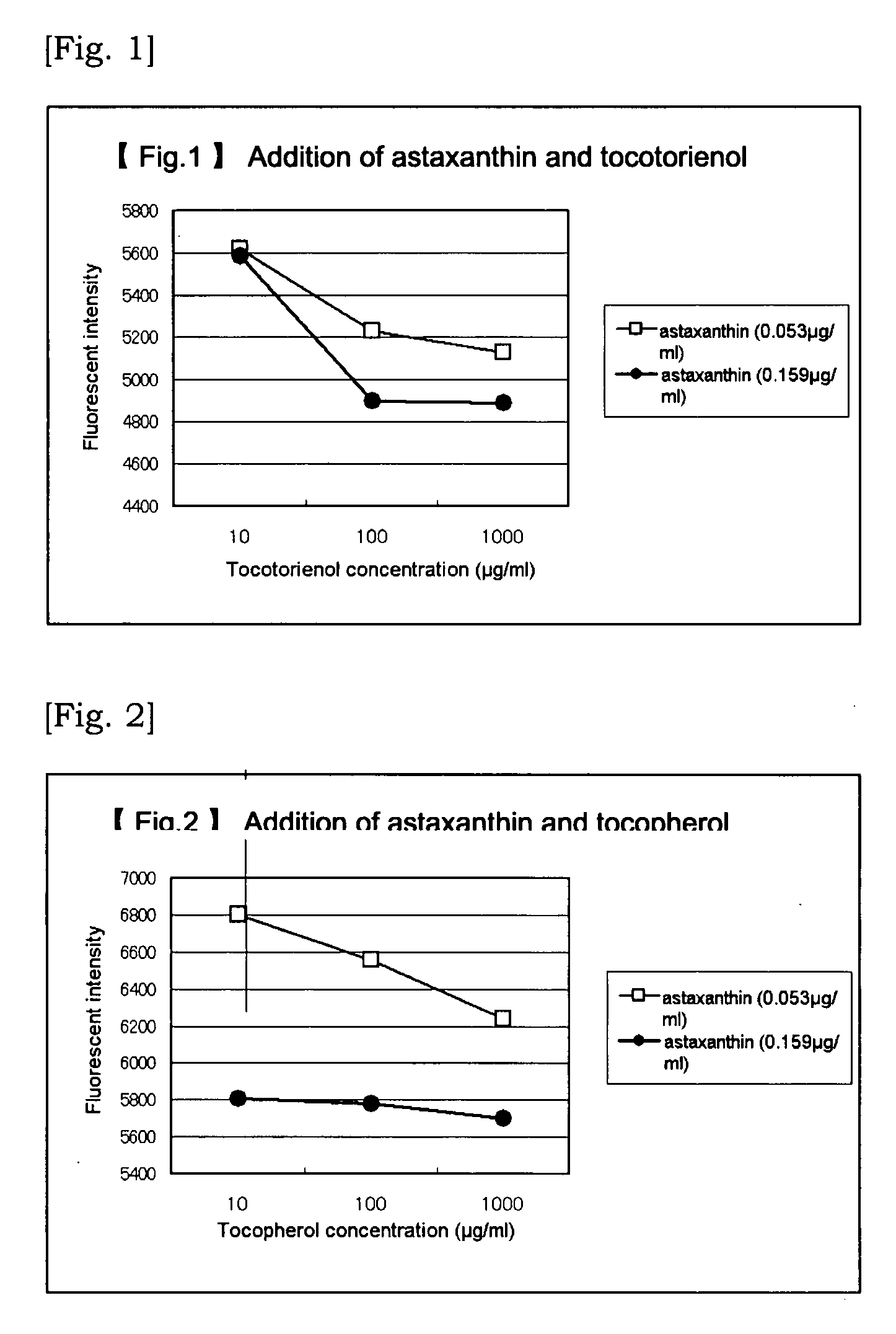Agent for Alleviating Vascular Failure
- Summary
- Abstract
- Description
- Claims
- Application Information
AI Technical Summary
Benefits of technology
Problems solved by technology
Method used
Image
Examples
example 1
[0066][Preparation of a Culture Medium]
[0067]9.4 g a minimum essential medium (EMEM) of Eagle powder (a product of Nihon Pharmaceutical Co., Ltd.) was dissolved in 1000 ml of water at room temperature under stirring and sterilized in an autoclave (121° C. for 15 minutes). A sodium bicarbonate solution (a product of Otsuka Pharmaceutical Meylon Inc.), glutamine (a product of Nissui Pharmaceutical Co., Ltd.), an essential amino acid solution (a product of Gibco Company), a non-essential amino acid solution (a product of Gibco Company), a mixed vitamin solution (a product of Gibco Company) and a mixed antibiotic solution (a product of Gibco Company) were added thereto. To this culture medium was added a cattle's fatal serum (a product of Gibco Company) to prepare 10% and 0.4% content of cattle's fatal serum (hereinafter, referred to as “10% FBS added EMEM”, “0.4% FBS added EMEM”, respectively).
[0068][Test Method: 24-Wells Plate]
[0069]Vascular endothelial cells (GM07373A) subcultured wi...
example 2
[0078][Test Method: 96-Wells Plate]
[0079]Although the method is basically the same as that in Example 1, 96-wells plate was used and the staged dilution was conducted with a multipippete, and a fluorescent plate reader was employed. That is, vascular endothelial cells subcultured in a T25 flask were separated with a trypsin-EDTA solution and diluted with 10% FBS added EMEM culture medium. And then, pre-cultivation was conducted for 4 days in a T25 flask. The cells in confluent state were again separated with a trypsin-EDTA solution and diluted with 10% FBS added EMEM culture medium to prepare a cell floated solution of 95×104 cell / ml. The cell floated solution was sprinkled over the 96-wells plate in the amount of 100 μl per well and cultivation was conducted for 2 days. The culture medium was removed under suction and 50 μl of 0.4% FBS added EMEM culture medium was added to the residue and thereafter the cells in starvated state was cultivated over a night. The culture medium was r...
preparation example 1
Tablet
[0086]The following ingredients were uniformly mixed together in the following composition ratio (% by weight) to make tablets, each 200 mg of weight.
Astareal powder10parts by weightPowdered blueberry2parts by weightV premix3parts by weightLactose50parts by weightPotato Starch32parts by weightPolyvinyl alcohol2parts by weightMagnesium stearate1parts by weight
Astareal powder (a product of Fuji Chemical Industrial Co., Ltd.) is the powder product prepared from Hematococcus alga extract oil containing 1% by weight of astaxanthin in terms of free form.
PUM
| Property | Measurement | Unit |
|---|---|---|
| Fraction | aaaaa | aaaaa |
| Fraction | aaaaa | aaaaa |
| Fraction | aaaaa | aaaaa |
Abstract
Description
Claims
Application Information
 Login to View More
Login to View More - R&D
- Intellectual Property
- Life Sciences
- Materials
- Tech Scout
- Unparalleled Data Quality
- Higher Quality Content
- 60% Fewer Hallucinations
Browse by: Latest US Patents, China's latest patents, Technical Efficacy Thesaurus, Application Domain, Technology Topic, Popular Technical Reports.
© 2025 PatSnap. All rights reserved.Legal|Privacy policy|Modern Slavery Act Transparency Statement|Sitemap|About US| Contact US: help@patsnap.com


